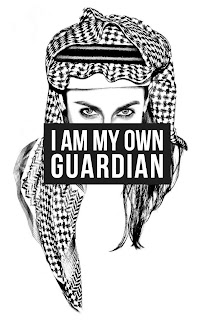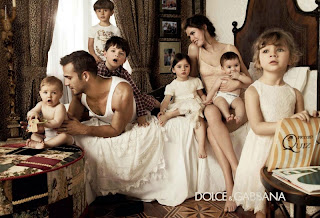Today our lives are mediated by technologies developing more rapidly than we have time to grasp them. As we scramble to cultivate definitions and codes of ethics for living with digital media, we are at risk of overlooking critical elements of how we access, process and share information. Although our comprehension of database logic is a tentative one, it is a structure that fundamentally supports our online activity. By understanding the role of databases in online narrative construction, we begin to understand how these narratives situate web users within participatory culture. Within these communities content is often circumscribed within a subculture and yet it is globally accessible and receptive to change from users outside that community. By responding to issues surrounding narrative and interaction, as well as paradigmatic and syntagmatic methods of creating meaning, this paper will attempt to delineate the relationship between database content and the psychological need to identify as a member of a community.
A concerning oversight is the current popular notion of narrative as an informational equivalent to database. Historically competing for the opportunity to create meaning, database has presented itself in encyclopedias and photography, giving importance to categorization, while literature, art and cinema have traditionally followed a linear narrative format. While database classifies information for swift retrieval, narrative, critically, must employ the functions of the database to be able to move through its linear sequence.
[1] Although an understanding of new media through paradigm and syntagm is borrowed from linguistics, an application in new media transposes these roles. Where syntagm has traditionally meant an arbitrary grouping of signs (or data), in new media, it represents the relationship between them. Similarly, new media paradigms have no association with each other, besides their ability to exist within the database and be accessed at random. While Lev Manovich’s Language of New Media derides the tendency to reduce new media concepts into binaries, here it may be useful to understand narrative as a syntagm and database as a paradigm.


The departure from linear narrative has until recently been limited to the realm of avant-garde film but as the dominant media shifts to digital, online narratives can now be constructed using the gigantic database that is the internet. The
Korsakow system is one such example. Developed by Florian Thalhofer, this free, open source database-film generating software allows users to ‘create non-linear database-driven narratives’, otherwise known as K-films. The system has facilitated the production of a significant but paradoxically unquantifiable number of K-films – made so because without a beginning, middle or end, the narratives are incalculable. Thalhofer’s 2010 film
Planet Galata is published on the Korsakow site as ‘a *linear film’, which he explains as ‘a film that is exactly the same every time you look at it. Every scene is glued to each other once and forever. The concept of linear film is the result of technical limitations during pre-computer times.’ In 2009, Adrian Miles began using the Korsakow system to design a project using hypertext theory to make a ‘
networked, interactive video piece.’
[4] 42
Reveries from a Vog takes its name from forty two video fragments. Miles sought ‘to create a more reflective, possibly introspective, and certainly poetic work’ while avoiding traditional methods of narrative construction. The numbered titles and menu-like navigation through video fragments reflect the paradigmatic nature of the K-film and highlight the viewers’ ability to follow one of many (though finite) trajectories through the database.
[5] At this point it is important to reevaluate the common conception of interactivity. Presently it seems popular to regard interactivity in a fantastic, science fiction-like sense. The idea that one can ‘create’ a unique experience with digital media falls flat under the basic principle that once a program is written, though it may update and adapt, it cannot generate data that is not already present. Manovich insists that in new media, interaction is invariably literal. To equate ‘the psychological processes of filling-in, hypothesis forming, recall and identification’ with the physical contact between a user and computer hardware is invalid. To say that the agency of authorship is stripped from us would befit a player in a game of
exquisite corpse, who literally contributes to the narrative of a collaborative text, but it would be false to suggest a database user ever had such agency in the first place.
[6] Though the database user may be comforted in the knowledge that although they did not write the program, it is through they, the multitude of users, that meaning is interpreted, altered and reapplied.
If abstract readings of interactivity are untenable, how then is participation possible within a database? In the year of its inception, 8 million videos were being viewed on Youtube – a figure that would increase by almost 250% in less than five years of operation.
[7] The extreme popularity of the world’s largest video hosting database is largely due to its potential to form and maintain vast online communities. These communities consistently develop around shared interests, connecting through comments and user-generated video communication that can treble in exposure overnight. Jean Burgess’ attempt to demystify the viral video reveals a powerful social undercurrent, which invests itself in the sharing of videos as ‘mediating mechanisms via which cultural practices are originated, adopted and (sometimes) retained.’ For Burgess, the viral video becomes so because it behaves as a platform for novel and creative response. While Youtube has removed browsing features, its database structure is still evident in it’s ‘most popular’ category, featuring videos one might understandably call ‘overexposed’ such as Gangnam Style, with 1.8 billion hits as of October 2013.
It is not just the widely distributed videos that build communities around themselves, but those that are performative and also reflective of that performativity. It is interesting to note that although more than 70% of Youtube’s traffic comes from outside the United States, the ‘specific ethics of this internet subculture [is] oriented around absurdist and sometimes cruel frathouse humour.’
[8] A combination of novelty, absurdity and humour commonly constitute potential virality. Youtube users engage by appropriating the content of their peers, resulting in an aggregate cultural mediation.
[9] When viral Youtube content reaches critical mass, or has been appropriated to the point of being a ‘meme-upon-meme’, the community speedily responds with self-reflexive video content. An example of this can be found in
Youtube Haiku #1. The video is a montage of video content sourced from Youtube. For 11.42 minutes the viewer is overwhelmed by an arbitrary scan through Youtube’s seemingly endless database. The rapid cutaways offer a dizzying synthesis of of the vox populi of millions, mediated in dazzling colour, frenetic movement and comprehensible but collectively meaningless auditory information.
Since being uploaded in mid 2012 by Youtube user ‘Tharpless’, the title of the montage has since been repurposed to represent a new genre: the Youtube montage. Originally a series of six videos, a search for ‘Youtube Haiku#3’, for example, will offer anywhere between ten to twenty different versions of the original, each granted as much validity as its predecessor so long as it adheres to the basic criteria (montage of Youtube-only content) exemplified by the original, in some way innovating, or at least imitating it.
[10] Searching for ‘Youtube Haiku’ will also retrieve a host of other videos within the genre, but with original titles, such as
GIFS with Sound#1 by JamaicanBaconify.
[11] As a member of an online community, the ability to reflect on the behavior of that community and perhaps even affectionately ridicule it indicates a rapport and ideological connection between members that is more significant than the sum of its videos. The willingness to allow ones’ intellectual property to be edited and re-presented, possibly for the amusement of others may be mere capitulation to the inescapable multi-authorship of video content, but Stefano Tardini and I believe that, particularly in the
(peaceful) Western hemisphere of the internet, the experience of solidarity has become increasingly rare and sought after IRL (in real life).
The proliferation of absurdist ‘internet pollution’ is necessary if we are to establish ourselves as recognized members whose voices are heard within a community.
[12] Without such a community, we may struggle to establish the limits of our identity or realize the potential of our talents. Burgess concludes that much of the content of user-generated videos ‘are deeply situated in everyday, even mundane creative traditions’. This provides the access point for such a vast and divergent group of users to exchange their perspectives on a shared understanding of the everyday. The banality of content (amateur performers, recycled broadcast material, the lengthy and uninteresting ‘how-to’ genre) aids familiarity and inclusivity, facilitating a global idiom – an in-joke between millions. An optimist (or a modernist) might suggest that this kind of global dialog lends itself to an appreciation of those experiences (however banal) that are common to us all. A postpostmodernist might draw attention the potential to celebrate difference. I would conclude that, like many Youtube genres, the Youtube montage encourages users to traverse the database as a group, collaboratively working to curate their zeitgeist in an extended dialog between themselves but in view of the world.
**Please contact me for references.
REFERENCES
Burgess, J. (2008) 'All Your Chocolate Rain Are Belong to Us?' Viral Video, YouTube and the Dynamics of Participatory Culture. Video Vortex Reader: Responses to YouTube., 101- 109.
Retrieved from
http://networkcultures.org/wpmu/portal/files/2008/10/vv_reader_small.pdf.
Chandler, D. (1994). Paradigms and Syntagms. Semiotics for Beginngers
(Original work published 1994).
Retrieved from
http://www.aber.ac.uk/media/Documents/S4B/semiotic.html.
Karir, M. (n.d.). Internet Pollution. Retrieved October 19 2013, from
http://lacnic.net/documentos/presentaciones/lacnicxiv/Internet-Pollution.pdf JamaicanBaconify, (2012). GIFS with Sound #1 Retrieved October 12 2013, from
http://www.youtube.com/watch?v=KR0EHW6IpSw Manovich, L. (2001). Database as Symbolic Form. The Language of New Media (pp. 293-333).
Cambridge Mass, United States: MIT Press.
Miles, A (2009). 42 Reveries from A Vog . Retrieved October 12 2013, from
http://vogmae.net.au/ludicvideo/commentary/42ReveriesfromaVog.html S Tardini & L Cantoni (2005). A Semiotic Approach to Online Communities:
Belonging, Interest and Identity in Websites' . Universita' Della Svizzera Italiana .
Thalhofer, F (2000). Official Korsavow website Retrieved October 20 2013, from http://korsakow.org/
Tharpless, (2012). Youtube Haiku#1 Retrieved October 29 2013, from
http://www.youtube.com/watch?v=zUnVLELDzzI Zittrain, J. (2008). The Future of the Internet - and How to Stop it. Yale, United States:
Yale University Press.
[1] See ‘Database and Narrative’ Manovich, L (2001) The language of new media. Cambridge Mass: MIT Press, pp. 293-333
[2] Chandler, D. (1994): Semiotics for Beginners. (Chapter 4: Paradigms and Syntagms). [WWW document].
http://www.aber.ac.uk/media/Documents/S4B/ [3] See ‘FAQs’ Thalhofer, F (2000) Official Korsavow website http://korsakow.org/
[4] Miles, A (2009) 42 Reveries from A Vog
http://vogmae.net.au/ludicvideo/commentary/42ReveriesfromaVog.html Web. 1 Nov. 2013
[5] See 1.
[6] "The Exquisite Corpse". Poetry Plus. 2009.
[7] ‘2005-2010 Youtube Facts and Figures http://joaogeraldes.wordpress.com/2010/09/09/2005-2010-youtube-facts-figures-history-statistics/
[8] Burgess, J (2008) 'All Your Chocolate Rain Are Belong to Us?' Viral Video, YouTube and the Dynamics of Participatory Culture. In: UNSPECIFIED, (ed) Video Vortex Reader: Responses to YouTube. Institute of Network Cultures, Amsterdam, pp. 101- 109.
[9] Zittrain, J (2008) The Future of the Internet - and How to Stop It. Yale, Yale University Press.
[10] See above
[11] JamaicanBaconify, (2012) GIFS with Sound #1
http://www.youtube.com/watch?v=KR0EHW6IpSw [12] Karir M, Internet Pollution Merit Network Inc.
http://lacnic.net/documentos/presentaciones/lacnicxiv/Internet-Pollution.pdf
http://www.corpse.org/

























